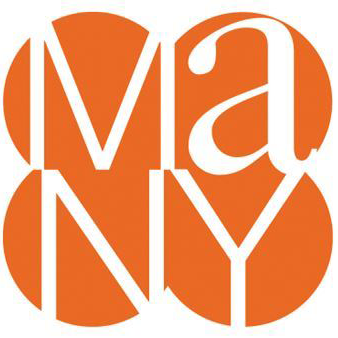MANY Episode 4
Episode 78: Museum Series Part 4
In this episode, you’ll learn different ways that you can diversify your audience from Billye Chabot, Kara Gaffken, Ed Varno, and David Hutchings.
We recently attended the 2018 Museum Association of New York annual conference and spoke with attendees from all over New York State representing all types of museums and cultural institutions. I found the conversations enlightening and inspiring. Through this series, I hope you will find a new perspective on this important segment of the tourism industry and how museums and cultural institutions are working to build community, reach audiences beyond their local markets and creating new programming and events that enhance the visitor experience.
In this episode, I share my conversations with:
- Billye Chabot, Executive Director of The Seward House Museum
- Kara Gaffken, Director of Public Programming at Historic Huguenot Street
- Ed Varno, Executive Director of the Ontario County Historical Society
- David Hutchings, Executive Director of Sonnenberg Gardens and Mansion State Historic Park
The Seward House Museum: Attracting New Audiences
Billye, thank you so much for taking some time out at the Museum Association of New York’s Annual Conference to speak with us today.
Thanks for inviting me.
I’m really looking forward to what you have to share with us and we’ll just dive right in. I’m wondering what you do to attract new audiences from your community.
Well, that’s a really good question because, frequently, we hear that visitors in our community came to the Seward House Museum on their fourth-grade field trip, and they haven’t come back since. So, we have been trying to really change that dynamic over the last several years. And there are numerous ways that we’ve done that, both as a community and as the Seward House.
One of our flagship offerings, I think, is providing a free First Friday event. And that began back in 2011, and now most all the organizations in Auburn participate in First Friday. And it’s something that’s free and accessible to everyone, so they always have a chance to come in for free. We offer music, food, we show local artists, and we find that people are finding us that way with just very simple signage saying, “We’re open for free tonight,” and getting that messaging out. We’re seeing a lot more visitors coming in having those types of programs.
That’s great. I think that’s interesting how the locals, isn’t that just how it goes? I went there for my fourth-grade field trip, but I haven’t been back. What a great way to kind of lure them back in, right? With the free First Fridays. Are you finding that from doing that, are you seeing repeat visitation where they might be bringing friends and family back?
Yes. So, another program that we do in Auburn is a passport program with grade school students. And that is also something that is shared by the other historic sites in Auburn and cultural sites as well. So the students can come in, and they’re encouraged to bring a parent, so they’re visiting. Again, it’s for free. They have a little passport that they can get stamped. And they have their parents or their siblings with them. So, it’s really a way of reminding the parent, perhaps, and bringing along that next generation.
We also do targeted programming for younger audiences. This past weekend we had Mr. Seward’s Junior Detective League. And that is designed for preschoolers and it’s just a 30-minute program. You bring your parent along with you. So that is really designed for that very young audience. And then we have other ways that we’re trying to bring in Millennial-aged audiences as well.
That’s really great. So kind of staying on the same idea of reaching new audiences, how are you reaching past your local market to get those visitors from outside of your area?
Well, that’s also a great question. So, we do actual formal visitor surveys. And what our visitor surveys have shown us in the past (and we continue to do these every summer), we know who our visitors are.
Currently, the majority of our visitors are female. And we know that females often make the decision in the family of where the family is going to visit. But female over the age of 55 and visiting from more than 100 miles away. So we know that we are a destination, that we are an attraction that folks gets off of the thruway to visit Auburn, to visit the Seward House Museum, and the many, many other attractions that are in the Finger Lakes region.
I love that you do visitor surveys because trying to figure out how to attract folks, first, you need to understand who’s coming, so I think that that’s really great and interesting that they’re from over 100 miles away, those visitors. So, they’re coming and they’re experiencing probably more than your one stop. Would that be accurate?
That is definitely accurate. There’s an abundance of activities in the Finger Lakes region for those looking for cultural heritage destinations such as Seneca Falls and Seward House and the Harriet Tubman, which is now coming under the National Historic Park. So many things to do, and we’re seeing those visitors.
Seward House Museum: Being a Community Anchor
That’s great. So, the other thing that we’re exploring today while we’re at the Manning Conference is this whole idea of the museum as a community anchor. Can you speak about how the Seward House Museum acts as a community anchor in Auburn?
Sure. So, over the last several years, I think, the city of Auburn and Cayuga County have really promoted economic tourism and tourism in general as an economic driver for the region. It’s pretty evident that manufacturing has gone away, that the job market has changed, and the types of jobs are changing in the future, but something that we’re always going to have is this beautiful region, the Finger Lakes region, with the wonderful history. So places like the Seward House Museum are so important. Our location right in downtown Auburn certainly makes us a community anchor in the city of Auburn.
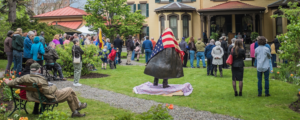
[bctt tweet=”“It’s pretty evident that the job market has changed, but something that we’re always going to have is this beautiful region, the Finger Lakes region, with the wonderful history.” – @bchabot #podcast”]
And, again, I would have to mention the Harriet Tubman National Historic Park. When that is really up online, I think we’re gonna see a huge uptick in visitation, so the city is really getting ready for that and really hanging their hat on that idea of economic development through tourism.
Yeah, I think that that’s a really great point, that we’re not just talking about visitation to a museum, but we’re also talking about an economic engine.
Right.
The Seward House Museum: Future Outlook
Yeah, I think that’s really great. So now looking into the future, what are your goals in the next three to five years for the Seward House Museum?
So, we are currently doing a strategic plan. And we have a wonderful national figure that is helping us facilitate that plan. It’s Dr. Brent Glass and he’s the director emeritus of the Smithsonian Museum of History and he’s been with us now for a little over a year, helping us with strategic planning. He’s also worked some with the city of Auburn. We’re trying to understand how all the pieces fit together. So we are currently knee-deep in our next five-year strategic plan, but our vision, the vision for the Seward House Museum, is to be a nationally recognized historic house museum.
So Seward is never going to be a president, right? So he’s not going to have the same type of name recognition, but we have people around him who do have that national name recognition, such as Harriet Tubman, such as Abraham Lincoln. So we’re looking and examining ways that we can use those connections to help raise the awareness of William Henry Seward and the historic house museum, and certainly, Tubman is one of the ways that we’re gonna get there.
Yeah, that’s fantastic. Well, and I love that you’re doing the strategic plan and that you’re working with this renowned consultant that’s helping you with that process and I think that’ll really help you make that vision come true.
Yes.
That’s awesome. Well, thank you very much for joining me, Billye.
Well, thank you so much for inviting me, and it’s been a wonderful Museum Association of New York Conference, and every year it just gets better.
Historic Huguenot Street: Attracting New Audiences
Billye had amazing insights and I love how the free Friday nights event has spread to other museums in the community. Next, we will join in on the conversation with Kara to hear how her events create advocates from a very young age.
Kara Gaffken, Director of Public Programming at Historic Huguenot Street
Kara, thank you so much for taking time out to talk to me today at the Museum Association of New York conference.
Sure. Happy to be here.
I’m really excited to get your perspective on some of these questions, so let’s dive right in. How do you attract new audiences within your community?
Well, we are always working with local publications. We are online in the social media outlets, such as Facebook and Instagram and those sort of things. But we do a lot of, sort of guerrilla marketing of sorts. We really like to get face to face with people, go into the community, into organizations, into even local schools, and tell them about who we are and what we do, and try to provide programming that meets their needs.
I love that, that you’re talking about some of those traditional, with the local PR. And then, you’ve got some of that new media with the social media that you talked about. But then still the good, old-fashioned, get out in the street, feet on the street, face-to-face communication.
Definitely. Absolutely.
Historic Huguenot Street: Programs Attracting New Visitors
Tell us a little bit about your organization, and the kinds of programs that you do offer.
Sure. Historic Huguenot Street is a 10-acre national historic landmark district. We have seven historic stone homes that all date back to the late 17th and the early 18th century. We open those houses up for public tours May through October, but year-round we’re doing special programming, whether that be special topic tours, educational talks, book signings, concerts, those sorts of things.
The community itself was founded in 1677 by French Huguenot refugees, who were fleeing religious persecution in their homeland of France. But the story of New Paltz goes so far beyond just the story of these French Huguenots. These French Huguenots went on to enslave Africans, and so we focus a significant deal on the history of slavery in Ulster County, in the Hudson Valley.
They settled in a Dutch colony that would soon become an English colony. They purchased the land from the Native Americans, so you really have one of the first melting pots right in New Paltz. We’re constantly talking about the different cultures, and the assimilation that was taking place, and those sorts of things as well. Our programming really tries to focus not just on the Huguenots, as I said, but on all these people, and the impact that they’ve had on the community, and how their presence has helped New Paltz to evolve into the town we know and love today.
That’s really awesome. Kind of talking a little bit more about attracting audiences, how do you get visitors from outside of your community to come and experience your organization?
A little bit of that same guerrilla marketing that I was talking about, but definitely making sure that our programming is specifically geared towards those audiences. If we were doing talks that were only ever about the French Huguenots, then we would expect to see a very specific visitor at every single one of those programs. But by ensuring that we are talking about the diversity of the street, well, then we’re more likely to attract a diverse audience. That’s something that we’ve been working on and focusing our efforts on, much, much more in the recent past. Making sure that we’re not just telling one side of the story, but talking about the whole picture.
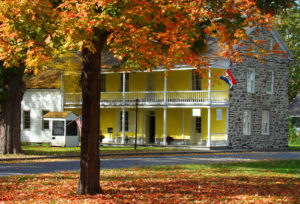
[bctt tweet=”“Make sure that you’re not just telling one side of the story, but talking about the whole picture.” – Kara Gaffken #podcast”]
We do try to engage the black community in those programs. We go into local churches and talk to them about this history and invite them to be a part of our programming. Even school districts. Making sure that we are working with and engaging school districts that might come from lower-income areas, and things like that. We will provide a decreased admission price to those students, and also help them by writing letters of support for any grants that they’re applying for, especially in regards to transportation. I mean, that’s what really is difficult, is the cost of transportation to go out for field trips. So, trying to make those connections, and to put on programming that meets their needs and their interests, and tells their story, as well.
Yeah. What I really like about that is, you know, kind of talking about how you diversify your programming to meet the needs of the diverse audience and to attract that audience.
Absolutely.
And it actually made me think about just content in general. Right? The content of the programming that you’re putting out, and how that kind of aligns with the audiences, and helps you attract them. I think that’s awesome.
Historic Huguenot Street: Being a Community Anchor
So, thinking about your organization, how do you see it as a community anchor?
Well, Historic Huguenot Street itself was the original historic village of New Paltz, so it’s literally where New Paltz was founded by these Huguenot refugees. And so, Huguenot Street was the first main street of New Paltz. All of the historic houses sort of flank the street. Because of that, we do put on many programs and events that are geared specifically towards our community, and continue to reinforce that it is a community gathering place.
We do a really fun, not necessarily educational, but fun, Trick-or-Treat on Huguenot Street every single year. We have our staff members dress up in Colonial costume. They staff the houses, and the community kids can come knock on the doors of the historic houses and actually trick-or-treat at them. We actually see thousands of people from the local community come out for that event, so that’s a big one for us.
We also host the annual community tree lighting the first weekend in December every year, and that’s actually a full weekend of events called A Holiday on Huguenot Street. So, just putting on things like that, it maintains that sort of small town, museum-community feel, and environment, which is really, really nice.
Yeah, I can see that. Just hearing you talk about the trick-or-treating, for example, I can see how that can become a tradition for people from the community, and how that really keeps what you have to offer top of mind. Even if that particular event isn’t necessarily educational in nature, but it still has people coming out, and knowing where you are and what you have to offer. I think that’s really awesome.
Yup, and it’s creating positive memories for this younger generation. We end up seeing the same kids who went to the tree lighting, or did the trick-or-treating on Huguenot Street, end up coming on a school field trip. And they say, “I remember being here. I had so much fun. I did trick-or-treat here, and I came to the tree lighting.” It’s like you’re creating this advocate from a very, very young age, which is our goal, always.
Historic Huguenot Street: Future Outlook
Yeah, absolutely. Well, speaking of goals, looking into the future, what are your goals for the next three to five years?
We’re definitely trying to continue to engage diverse audiences. That includes working within our community, so working more with the SUNY New Paltz campus, those students and their professors and scholars there. We’re also going to be working on a strategic plan in the near future, which we’re very excited about. And continuing to just tell a very honest and well-rounded piece of history.
That’s fantastic. Well, those all sound like they will keep you and your team very busy.
Yes.
Thank you very much for taking some time out today.
Thank you.
Ontario County Historical Society: Attracting New Audiences
That was an interesting conversation with Kara. Next, we will tune into my conversation with Ed and how he is bringing together art and history to attract new audiences.
Ed Varno, Executive Director of the Ontario County Historical Society
Ed, thank you very much for taking some time out at the Museum of the Association of New York’s Annual Conference to speak with me today.
Oh, thank you. It’s great to be here.
I’m really looking forward to getting your perspective on some of these questions. So, we’ll dive right in. The first one is, how do you attract new audiences within your local market?
The audiences are the lifeblood of the museum and it’s absolutely essential to get out and find the audiences, and we do that through exhibits and programming. The exhibits have to be diverse. We’re a local history museum and so, we do local history really well. What we’ve done in the past couple years is reached out and looked for different subjects for our exhibits. For instance, right now, we have one that attracts antique automobile clubs. It’s motometers. Now, nobody knows what motometers are, so, I’ll tell you. They are an antique automobile technology that attached to the radiator cap, that told people the temperature of their engine.
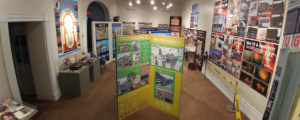
[bctt tweet=”“The audiences are the lifeblood of the museum and it’s absolutely essential to get out and find the audiences.” – Ed Varno #podcast”]
Wow.
So, it was developed in Rochester at Taylor Instruments because they… it’s a big deal for thermometers. The thermometer would go up and then look through. If you could see the thermometer read in the sight glass of this piece. It’s out at the end of your hood, well, then you know you better pull over because your engine’s too hot. So, okay, great, motometers. We have the world’s largest collector of motometers in Canandaigua. His name’s Francis Clax and he has over 250 of these and also all the advertising technologies because at one time, this was the only way to tell the temperature of your antique engine. So, the short of it is, we reach out for different subjects that attract new audiences because the Antique Automobile Club, unless their wives are with them, they probably wouldn’t want to come and see a suffrage exhibit, but the motometer exhibit is very much in their interest, and so they come in and see it.
By different audiences, we had a 1964 exhibit last year that was really popular in the community and brought in all ages and generations because the parents, who graduated in 1964 from high school, were bringing their grandkids in, or their kids in, to show them what 1964 was about, whether it was the Beatles, or whether it was Lyndon Johnson or the aftermath of the death of John Kennedy. This was all part of this 1964 exhibit that attracted families. Technology people, families, and now we’re looking at art because we feel art and history is the wave of the future, and we’ve recently come to an agreement with the Ontario County Arts Council, to have art exhibits in our north gallery for the next year, and they will have a series of three or four art exhibits that will attract another whole new group of audiences who that like art. We found at an opening last Saturday, that there was probably 150 people there for this opening, and not only did they see the art, they also drifted into the motometer exhibit, and they also drifted into the suffrage exhibit. It brings more people into the museum by diversifying your audiences. We generally do it through exhibits.
That’s fantastic and I love how you kind of connect those dots and talk about this whole idea of the motometers, which I had not heard of until today, but the fact that you have the suffragist exhibit going on at the same time, right?
That’s right.
You’ve got something for both, for the husband …
Male and… husband and the wife. Absolutely.
Exactly, and then this whole idea of attracting the families with an exhibit like the 1964 exhibit, I think that’s just really …
Don’t forget the art audiences.
Yeah, and the art audiences.
Art and history. Art and history. That seems to be the wave that’s going on right now.
The other thing I like about your art audience is that you’re collaborating, it sounds like, with another organization to make that happen.
Yeah, and I think that’s important. The collaborations are absolutely essential. We do many exhibits at the Wood Library, just like an exhibit case with two or three things in it that tell people what’s going on at the museum. The library has a tremendous audience and when they go there, they can see what’s going on in other areas. The other thing that we wind up doing, is we go to Mayor Polimeni’s meeting every month to talk to other organizations about what they’re up to and possibly building collaborations with those organizations. You have to get out in the community too, to attract diverse audiences.
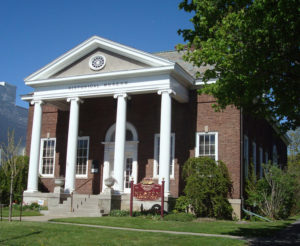
[bctt tweet=”“You have to get out in the community to attract diverse audiences.” – Ed Varno #WhyCollaborate #podcast”]
Yeah. That’s really great advice. So, kind of building off of this whole idea of audiences, how do you reach beyond the local audience and attract some of those visitors that might be coming from outside?
I think that it’s important to get your information into those places that visitors come, whether it’s the hotels, whether it’s the library, whether it’s the chamber of commerce, and now, Airbnb. They have a group of people that are coming into the area that are interested in wine tours and such, but what happens on the day it’s raining and they can’t go to the lake or take a ride on the lake? They’re looking for other things to do. We felt that by reaching into those areas, you can actually attract audiences from the outside. It’s important also to advertise in those regional documents that are out there, that are spread everywhere, and I know it’s a couple, $300 bucks for an ad, but it certainly gets the message out, and if you can find someone like the Arts Council to help you with the cost of such ads, you get a double whammy on it.
The other thing I found, is that, Valerie Knoblauch’s organization does a good job on advertising certain aspects of cultural elements and so, keeping in touch with her staff and inviting them to the museum to see what we’re all about, that certainly helps too.
Yeah, and just for our listeners’ sake, Valerie Knoblauch’s office is actually your local tourism office.
That’s correct. That’s correct. It is called visit the Finger Lakes Visitor Connection.
Yeah.
She does a great job.
Right, and so making sure because you had started to talk about getting out in the community and talking with the mayor and the other organizations in the community but also including your tourism office in that.
Yes, absolutely.
Ontario County Historical Society: Being a Community Anchor
It is definitely a piece of the pie. Now, just kind of thinking about the museum and the Ontario County Historical Society as a community anchor. In what ways would the museum be considered, or is the museum providing that?
The Historical Museum the society owns, operates, and serves as a venue for the community, whether the Genealogy Society is meeting there, or whether the Arts Council meets there. We find that as an anchor organization, you’re able to have a venue for people who want to do things that are culturally oriented. Now, let me give you an example. The suffrage exhibit that we’re currently offering, we had a group of women that wanted to do a march to the courthouse, which is just down the street and what a great place. They came in. They had d’oeuvres at the exhibit and then they all got together and they’re all dressed in period garb with their signs and they got out and they marched down to the courthouse.
Because of our location, which is right on Main street, we’re 40 feet off the street, we find that people want to come here because it’s easy to find. Generally, they can find parking and you have to provide those types of, venue or that atmosphere that attracts people, to make you an anchor.
I think that’s a really great point. Location definitely makes a difference and I like that example of how the community kind of embraces … You talked about organizations that use your place as a venue, as a meeting location, but then also this whole idea of the suffragist’s parade that you just mentioned, which, I just so happen to live in Canandaigua and my daughters participated in that parade.
There you go.
I wasn’t around, but they went with friends and so it was a great memory for them. They really enjoyed it.
The motometer exhibit, to get back to that, the Wayne Drumlins Auto Club is gonna have their picnic at the museum this year.
Oh wow.
Francis Clax, who owns this exhibit, is gonna be there to talk with them, give them a docent-led tour of the exhibit, and they just felt that it would be a really great place to come, park their antique automobiles, have a picnic, put a barbecue up, and enjoy themselves. So, that type of anchor stuff, I think, works really well.
Ontario County Historical Society: Future Outlook
That’s really great. Now, looking ahead, what are some goals for the museum that you have for the next three to five years?
The goals are relatively simple. We want to be a community venue, where arts and culture are presented. And the specifics we don’t know, but you have to have that plan out there to put it together and so if we stay as a venue that has interesting subject matters that is diverse, then we can continue to attract new audiences. Audiences are the key, and then once you know who your audiences are, then you provide a quality programming for those audiences and the quality programming keeps people coming back again and again.
The other thing I think that I failed to mention before is our effort to attract our cyber audience, which is, here we are. We’re doing a podcast. We’re very active on Facebook, YouTube. We have a series of historic videos on YouTube that people can see. We have a Twitter account where we stay in connection with other museums. That’s part of the big plan is to keep those audiences out there and keep bringing them in because with that comes the revenue, so, the support from the state. The state likes to see your organization is a community place with good exhibits and keeping people and new audiences coming in.
I think that’s a great point because what you pointed out is it’s not just about the audiences that are visiting your bricks-and-mortar building, it’s that greater audience of those folks that you are communicating with, whether it’s through your social media channels or through a monthly newsletter, or whatever it might be.
Yeah. So you do that and then if they ever come back to Canandaigua or come to Canandaigua, “Oh, I gotta go to that museum,” and then they’re right on Main Street and they stop in. It serves a dual purpose, but we have two basic audiences. We have a cyber audience, and we have a bricks-and-mortar audience and you have to cater to both of those.
Yeah. Absolutely. Well, thank you very much for taking time out during this conference.
No problem.
Sonnenberg Gardens and Mansion State Historic Park: Attracting New Audiences
I love Ed’s perspective on diverse programming. In my next conversation with David, you will learn how Sonnenberg Garden attracts cultural heritage tourists but increases annual attendance through public and private events.
David Hutchings, Executive Director of Sonnenberg Gardens and Mansion State Historic Park
Dave, thank you so much for taking some time out of the conference to talk to me today.
Thank you for having me, Nicole.
I’m looking forward to hearing your perspective on these questions. We’re gonna start right off with, how do you attract new audiences within your local market to Sonnenberg Gardens?
I think one of the greatest things about the historical aspects of our organization is that we do have a cultural heritage tourism crowd that comes. About 20,000 people come through our site just to visit the Home and the Gardens of Sonnenberg. But what we have seen, is that we have gained almost another 40 percent of our attendance, somewhere around 16,000 to 20,000 people, through doing public and private events to bring people into the site.
So whenever there’s a reason to be invited to the gardens, and to the mansion, and to the home, we see our attendance just skyrockets. And we really have a wonderful tagline theme that we want people to celebrate their lives at Sonnenberg because we’re really based on the love story between Frederick and Mary Clark Thompson. Those are really what we’ve found so far to be effective.
I think that’s a really good point because of those public and private events, like even somebody who might be hosting a wedding there, or family party, right?
Right.
Can bring in a whole new audience that might not have otherwise gone there. Is that correct?
Absolutely. I think because, if it’s a special day or a special event for someone’s private life, it’ll be those memorable experiences that will hold on for a really long, long time.
Yeah, I can see that. Absolutely. And I’ll bet you get a lot of repeat visitation that way. You’ve gotta come back for the anniversary, right? Or to go down memory lane?
Yes, well we are starting to market that way, anyways. So we’re trying to send back anniversary cards and just welcoming people to come back and remember.
That’s great.
Yeah.
So along the same lines, but still talking about attracting new audiences, how do you reach beyond your local market and kind of reach that visitor audience?
Well, one of the things that we’ve been somewhat successful is marketing on the idea of “trip on a tankful.” We’ve really brought the Buffalo market, the Canadian market, some of central New York’s market, and the southern tier, and even have had a pretty good success of bringing people from Pennsylvania from the Erie area.
It’s the idea of we’re a day-use site and that we’re really for three or four hours of your time, it’s worth the drive to do it on a tankful.
So that two, two-and-a-half to the three-hour range has brought in the attendance. Last year I think we had 11 percent of our people came from the Buffalo-Erie area. We had, I think, nine percent come from the Canadian market, and then, again, the central New York area is starting to also have a rise. I don’t know what that percentage is, but I think we’re trying to make some more outreach to beyond us.
I also go out and do PR talks. So I’ll be in Liverpool and Baldwinsville because we’re trying to start to open up the full Syracuse area. I go to the men’s garden clubs, the women’s garden clubs, and just try to make our exposure to be very friendly. And that people see us beyond our four walls but we go out to other communities to see if we can bring people to us.
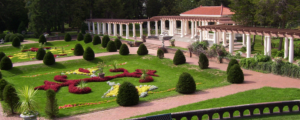
[bctt tweet=”“Have people see you beyond your four walls. Go out to other communities and see if you can bring people in.” – David Hutchings #WhyCollaborate #podcast”]
That’s great. And I think that whole kind of face-to-face is still so important in really kind of building those relationships and that trust, as you mentioned.
Yeah, I really believe that flesh and blood really work with flesh and blood.
Sonnenberg Gardens and Mansion State Historic Park: Being a Community Anchor
Yeah. I would agree. Now thinking about the museum as a community anchor, how are you kind of working to be that community anchor in Canandaigua?
Well, if you know of Sonnenberg, we have an incredible volunteer core. We have supported probably in the neighborhood of 250 to 300 volunteers who have helped to bring in, in the neighborhood of 17,000 to 25,000 hours a year of service.
Wow.
We’re really inviting the community to come in and help us really do the programming. Much of the staff is in regards to marketing and putting together the finances to bring about the place, but we really invite people to come in and volunteer, and tell the story, and be part of the program. As a small non-profit and a large property, we really are property managers on so many levels, but we don’t have the bandwidth for the programming from a staffing point of view. We direct it, we write it, but we actually also make it a part of our volunteer program. And I think that makes us our biggest anchor to the Canandaigua community, and really, we’re seeing that volunteers, and it’s really going to be more like a 30-mile radius. We’re bringing people in from Rochester. Had some great volunteers and had a wonderful article from a couple of volunteers from Geneseo that really engaged in our orchids this winter. So again, I think that I believe, is our number one key thing for that.
But we also invite community groups to come in and help us. So we really have two times during the year when the Church of Latter Day Saints will come in during their wonderful festival that’s in Elmira and spend three days in service to our organization. Last year, they actually planted the Italian garden on Memorial Day weekend when they were in to do some of their theatrical performances to bring about their story, they helped us with our story.
Sonnenberg Gardens and Mansion State Historic Park: Future Outlook
That’s really awesome. I love that connection. So now Dave, just looking forward into the future a little bit, what are some of the goals that you have for Sonnenberg in the next three to five years?
Well if you know anything about Sonnenberg Gardens, it’s a garden that’s been in existence since the founders bought the property in 1863. The home was built in 1887, finished. And then there was a period of time that the Veterans Administration bought the property, built a hospital. And it was a community group in 1972 and ’73 that brought that space back to as a community event, as a community non-profit.
Because it’s just a small community of about 12,000 people in Canandaigua, again, the bandwidth of being able to care for this property has just been weak. I don’t know how else to say it. The infrastructure has been broken. I believe that my role, I’ve been there 12 years, going on 13, and throughout the rest of my career at Sonnenberg will be to put together the infrastructure for its future success.
We’ve done about five million dollars’ worth of work on restoration since I walked through the door. We have water features that’ll be done this year. We are really looking to build a welcoming visitor center by using an adaptive reuse of an army reserve center that was built on the original property in 1961. That will really, hopefully, come back to us and we’ll be able to build that place.
I think in my time, and I hope to be there more than three to five years, but in the immediate future, we’re still working on the property and the product of these beautiful botanical gardens of upstate New York that are historical in nature and really depict six to nine different environments of the world. So we have quite a chore always ahead of us and we’re in that restoration project. So we have all that to do. I don’t know if that’s a long answer, but it’s infrastructure and it’s product development to build the botanical gardens and the historic place is our ongoing goal.
Right. Well and all of that really provides a foundation, right, for the future.
Absolutely.
So, I mean, I think that’s absolutely a great vision and a great way to wrap up this quick conversation. So thank you very much for taking some time out to talk to me.
Okay, thank you, Nicole. Thank you for having me today.
Websites:
- Billye Chabot, Executive Director of The Seward House Museum: http://www.sewardhouse.org/
- Kara Gaffken, Director of Public Programming at Historic Huguenot Street: https://www.huguenotstreet.org/
- Ed Varno, Executive Director of the Ontario County Historical Society: http://www.ochs.org/
- David Hutchings, Executive Director of Sonnenberg Gardens and Mansion State Historic Park: https://www.sonnenberg.org/
We value your thoughts and feedback and would love to hear from you. Leave us a review on your favorite streaming platform to let us know what you want to hear more of. Here is a quick tutorial on how to leave us a rating and review on iTunes!
